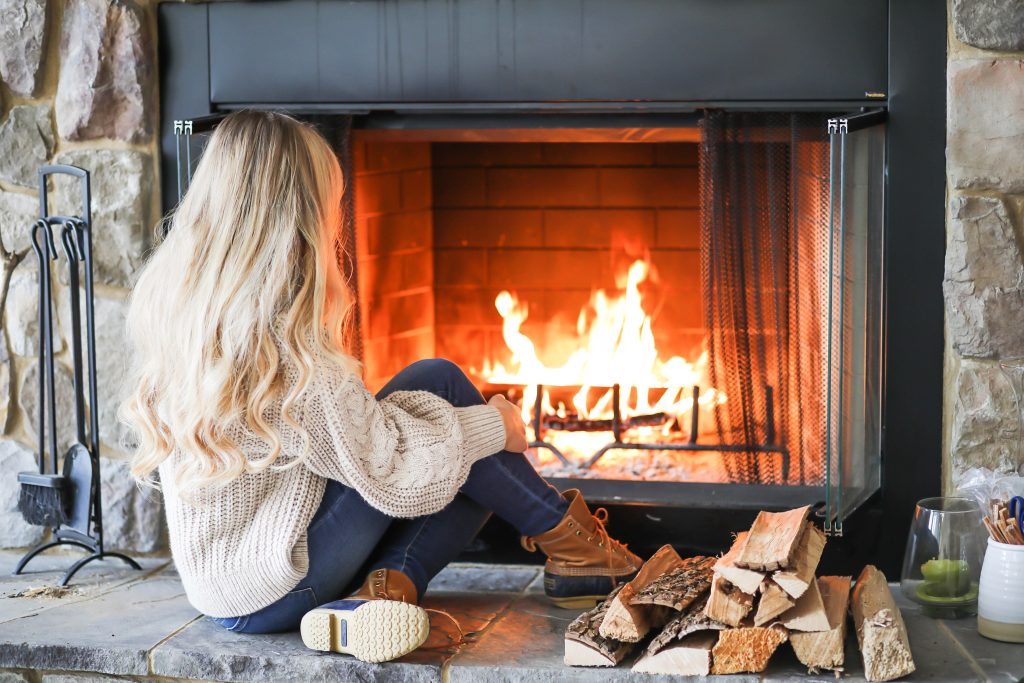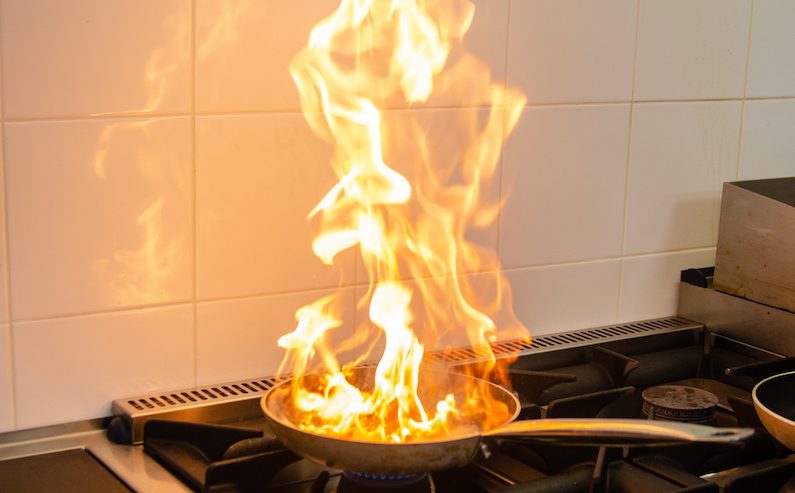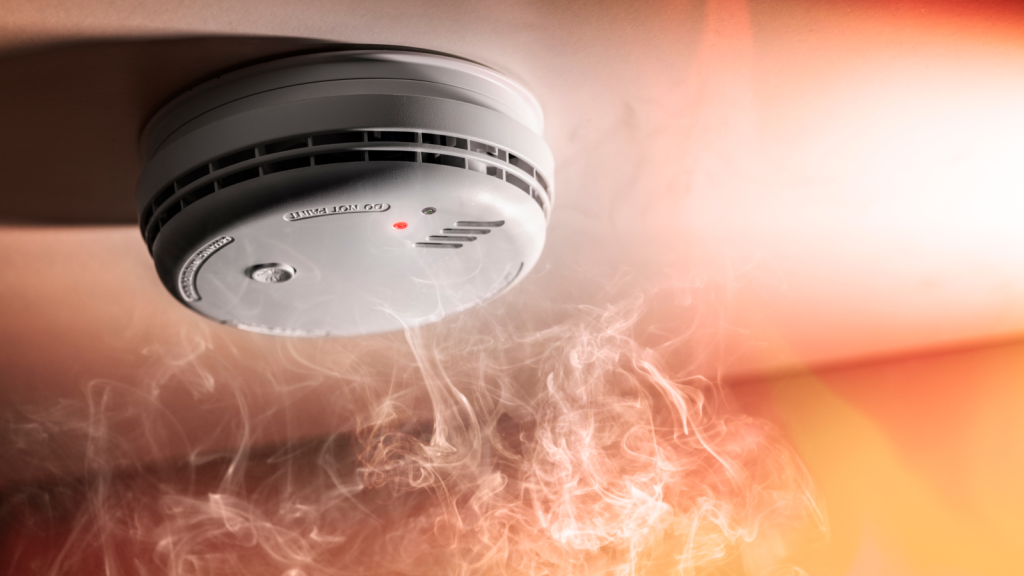Fire Prevention: Essential Tips for Keeping Your Home Safe This Fall

As the cooler temperatures of fall set in, many homeowners turn to cozy activities like lighting candles, using space heaters, and preparing hearty meals. While these habits can create a warm and inviting atmosphere, they also come with increased fire risks. Practicing fire prevention is crucial to protecting your home, family, and belongings during this season. In this article, we’ll explore key fire safety tips, how to reduce fire hazards, and what to do if fire damage occurs in your home.

Fire Prevention at Home: Key Steps for Safety
Fire prevention starts with being proactive in your home. Whether you’re using a fireplace, cooking in the kitchen, or heating your space, there are steps you can take to minimize fire risks and create a safer living environment.
Keep Heating Equipment Safe
As temperatures drop, homeowners often rely on space heaters, fireplaces, and furnaces to stay warm. However, these heating devices can become significant fire hazards if not used properly. Follow these important fire prevention tips to avoid potential fire damage:
Space Heater Safety
- Keep a three-foot radius around any space heater, free of flammable materials like blankets, curtains, and furniture.
- Always unplug the heater when not in use or when you leave the room.
- Never use space heaters near water sources, such as sinks or bathtubs.
Fireplace and Furnace Maintenance
- Have your fireplace and chimney inspected and cleaned annually by a professional to prevent the buildup of soot or creosote, which can ignite.
- Store firewood at least five feet away from the fireplace and only burn seasoned wood for cleaner, safer fires.
- For furnaces, replace filters regularly and keep surrounding areas clean and free of debris.

Fire Prevention in the Kitchen
Cooking is the leading cause of home fires, particularly during the fall and winter months when comfort foods are often prepared. Whether you’re cooking for the holidays or just making a weeknight dinner, it’s important to follow these fire safety tips in the kitchen.
Kitchen Fire Safety Tips
- Never leave cooking unattended. If you need to step away, turn off the burner or stove until you return.
- Keep flammable objects like dish towels, food packaging, and paper products away from the stovetop and oven.
- Use oven mitts when handling hot pans, and avoid wearing loose clothing while cooking.
- In case of a grease fire, don’t use water. Instead, smother the flames by sliding a lid over the pan and turning off the heat.
By staying vigilant in the kitchen and following these fire prevention techniques, you can significantly reduce the risk of a fire starting while cooking.

Fire Safety Equipment: Essential Tools for Protection
Having the right fire safety equipment in your home is crucial to preventing small fires from spreading. Equipping your home with smoke alarms, fire extinguishers, and carbon monoxide detectors can provide an early warning in case of a fire.
Smoke Alarms and Carbon Monoxide Detectors
- Install smoke alarms in every bedroom, outside sleeping areas, and on every level of your home. Test alarms monthly to ensure they are working.
- Change the batteries in your smoke alarms and carbon monoxide detectors at least twice a year or when you adjust your clocks for daylight saving time.
- Make sure all household members can hear and recognize the sound of the smoke alarms.
Fire Extinguishers
- Keep a fire extinguisher in key areas such as the kitchen, garage, and near any heating equipment.
- Learn the PASS method for using a fire extinguisher: Pull the pin, Aim low, Squeeze the lever, and Sweep the nozzle from side to side.
- Regularly check the expiration date of your fire extinguishers to ensure they’re functional in case of an emergency.

What to Do If Fire Damage Occurs
Despite your best efforts, fires can still happen. In the unfortunate event of fire damage, it’s important to take immediate action to ensure your safety and begin the recovery process. Affordable Restoration specializes in comprehensive fire restoration services to help you restore your home and belongings quickly and efficiently.
Steps to Take After a Fire
- Evacuate safely: In the event of a fire, make sure everyone exits the home immediately and follows your family’s fire escape plan.
- Contact professionals: Reach out to Affordable Restoration for fast and reliable fire restoration services. Our team will assess the damage and begin the recovery process to restore your home to its pre-fire condition.
- Document damage: Take photos and videos of the fire damage to provide to your insurance company for filing a claim.
For more information about fire restoration, you can contact us here.
Conclusion
Fire prevention is essential to maintaining a safe and secure home, especially during the cooler months of fall. By following these fire safety tips and equipping your home with proper safety devices, you can significantly reduce the risk of fire damage. And if a fire does occur, remember that Affordable Restoration is here to help with expert restoration services to get your home back to normal quickly and efficiently.
Stay safe and enjoy a cozy, fire-free fall season!

Fire Prevention FAQs
- Keep a three-foot clearance around space heaters and fireplaces.
- Have your chimney and furnace inspected and cleaned annually.
- Install and test smoke alarms in key areas like bedrooms and hallways.
- Be mindful of kitchen fire safety, such as never leaving cooking unattended and keeping flammable objects away from heat sources.
- Smoke alarms installed on every level and in every bedroom, tested monthly.
- Carbon monoxide detectors installed near sleeping areas.
- Fire extinguishers in key areas like the kitchen, garage, and near heating equipment, along with knowledge of the PASS method (Pull, Aim, Squeeze, Sweep) to use them effectively.
- Evacuate the home immediately, following your family’s fire escape plan.
- Contact Affordable Restoration for fire restoration services.
- Document the damage with photos and videos for your insurance company.
- Have your fireplace and furnace inspected and cleaned annually.
- Keep a clear space of at least three feet around heating devices.
- Regularly replace furnace filters and keep the area around the furnace clean to reduce fire hazards.
